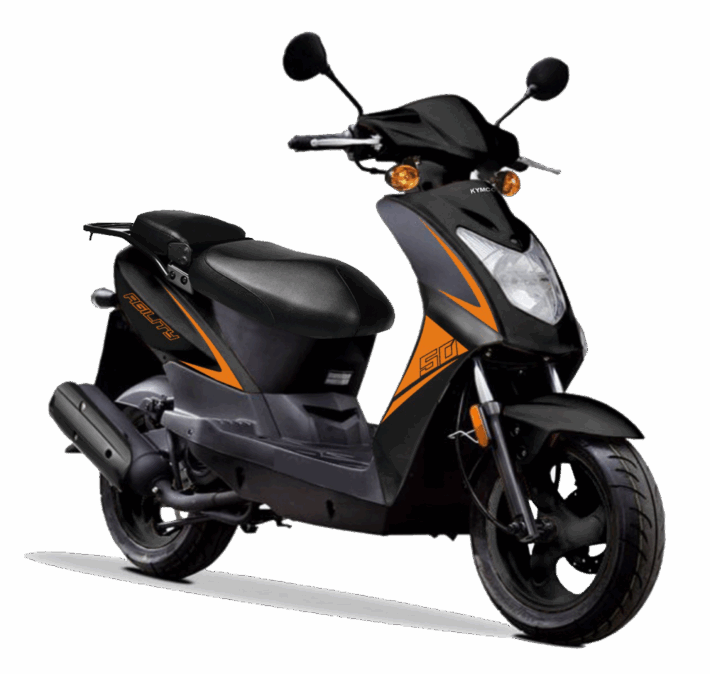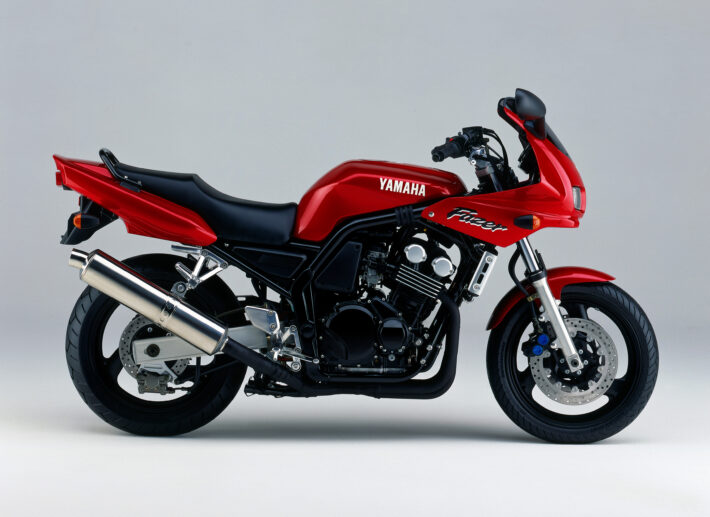Thinking about learning to ride a motorbike? Or perhaps looking to upgrade your current licence? Either way, it’s important to get to grips with what motorbike licence you need, as every type carries specific requirements and limitations.
We’ll go through the different types of motorcycle licences available in the UK, what each one allows you to ride, and how to progress from one level to the next.
What are the different types of motorbike licence?
Most riders will start with a provisional licence and Compulsory Basic Training (CBT), before moving up through different categories depending on age and experience.
Here’s a quick breakdown of the key licence types, the bikes they allow you to ride, and the requirements for each:
| Licence Category | What you can ride | Requirements | Minimum age |
| Provisional | Up to 50cc with L plates | Provisional licence + CBT if no full car licence | 16 |
| A1 | Motorcycles up to 125cc (11kW max) | CBT + Theory + Practical (Module 1 & 2) | 17 |
| A2 | Motorcycles up to 35kW (power-to-weight ratio not exceeding 0.2kW/kg) | CBT + Theory + Practical (Module 1 & 2) | 19 |
| A (Full) | Any size motorbike, no power restrictions | CBT + Theory + Practical (Direct Access if over 24) | 21 (progressive route) or 24 (direct access) |
Source: https://www.gov.uk/ride-motorcycle-moped/bike-categories-ages-and-licence-requirements
Provisional motorbike licence
To start learning to ride a motorbike, you will need a provisional motorcycle licence. This is often included with a standard UK driving licence or can be applied for separately if you don’t already hold one.
If you already have a full UK car licence and passed your driving test before 1 February 2001, you’re allowed to ride a 50cc moped without L plates. To ride anything more powerful, including a 125cc motorbike, you will need to complete your CBT.
Compulsory basic training (CBT)
CBT stands for Compulsory Basic Training. It’s a course you usually have to take before you ride a moped or motorcycle on the road.

The CBT is a one-day course that covers the basics of motorbike safety and road awareness. Once passed, it allows you to ride:
- A moped (up to 50cc) at 16+
- A motorcycle (up to 125cc) at 17+
Some things to keep in mind:
- You must display L plates and can’t carry passengers until you progress to a full licence.
- You can’t ride a 125cc without a valid CBT, regardless of your driving experience.
- If you ride without having a valid CBT certificate, you can be fined up to £1,000 and get up to 6 penalty points.
Source: https://www.gov.uk/motorcycle-cbt
Note: You don’t need to retake your CBT every two years if you pass your full A1, A2 or A licence during that time. Otherwise, it will expire after two years and you will need to retake it.
A1 motorbike training
An A1 licence allows you to ride motorcycles up to 125cc and no more than 11kW of power. To qualify for an A1 licence, you must:
- Be at least 17 years old
- Complete a CBT
- Pass the motorcycle theory test
- Pass both modules of the practical test
With an A1 licence, you can ride without L plates, carry a passenger, and use motorways, but only on bikes within the A1 limit.
A2 motorbike training
The A2 licence is the next step up. It allows you to ride bikes up to 35kW (47bhp) with a power-to-weight ratio not exceeding 0.2kW/kg.
To qualify for an A2 licence, you must:
- Be at least 19 years old
- Complete a CBT
- Pass the motorcycle theory test
- Pass both practical test modules
If you’re under 24, this is the usual route before you can move up to a full Category A licence.
What’s the difference between A1 and A2 categories?
While both A1 and A2 licences require the same tests, the main difference lies in the bike’s power:
| Category | Max engine size | Max power output |
| A1 | 125cc | 11kW |
| A2 | No engine size cap | 35kW (47bhp) max, power-to-weight ratio ≤ 0.2kW/kg |
A2 bikes may be larger and more powerful than A1, but they’re still restricted to make them manageable for newer riders. Many riders choose A2 as a stepping stone before upgrading to a full licence.
Category A licence training
The full Category A licence lets you ride any motorcycle, regardless of size or power.
- To qualify, you must be at least 24 years old (for direct access), or:
- Be 21+ and have held an A2 licence for at least two years (progressive route)
- Complete CBT, theory test, and both modules of the practical test
Once you have an A licence, you can ride anything from a 125cc to a 1000cc superbike, carry passengers, and ride on motorways.

How much do motorbike licences cost?
Costs can vary depending on how you choose to learn and your age, but here’s a general idea of what to expect:
- Provisional licence: £34 (online) or £43 (by post)
- CBT course: £130–£170
- Theory test: £23
- Practical test (Module 1): £15.50
- Practical test (Module 2): £75 (weekday) / £88.50 (weekend)
- Training courses: A1/A2/A licence training can cost £500–£1,200 depending on duration and instructor
If you’re 24 or over, you can take the Direct Access route to a full Category A licence. This means you don’t need to get an A1 or A2 licence first — you can train and take your test on a larger motorbike straight away. It’s often a more cost-effective option in the long run, as you only need to complete one set of tests instead of going through each licence stage.
Theory tests for motorbike riders
The theory test is a mandatory step after your CBT, covering road signs, hazard perception, and motorbike-specific knowledge.
The theory test pass is valid for two years. If you don’t pass your practical tests (both modules) in that time, you will need to retake the theory test.
How many times does a motorbike test have to be taken?
There’s no limit to how many times you can take the motorbike practical tests.
However, once you’ve passed your theory test, you’ll need to pass both practical modules (Module 1 and Module 2) within two years. If not, you’ll have to retake the theory test before you can try again.
Here’s how it works:
- Module 1 is the off-road test that checks your basic handling skills. You can rebook and try again if you fail it.
- Module 2 is the on-road test that assesses how you ride in real traffic. If you don’t pass, you’ll need to rebook and pay for another attempt.
- The theory test must be passed before you attempt either module. But remember, it only stays valid for two years.
- A CBT is valid for two years too. If you don’t move on to a full licence in that time, you’ll need to do the CBT again.
Help stay protected on the road with Devitt
Once you’ve got your licence, the next step is getting your motorbike insurance sorted. It’s a legal requirement, and without it, you risk fines, penalty points, or even having your bike seized.
At Devitt, we’ve been arranging motorbike insurance for UK riders since 1936. Our cover is built to suit all types of riders, wherever your bike takes you. We can offer cover for classic bikes, custom builds, scooters, superbikes and more, plus optional extras like breakdown cover, legal expenses and helmet and leathers protection.
Call us on 0808 503 4747 or fill in our online form to get an instant quote.
Disclaimer: The sole purpose of this article is to provide guidance on the issues covered. This article is not intended to give legal advice, and, accordingly, it should not be relied upon. It should not be regarded as a comprehensive statement of the law and/or market practice in this area. We make no claims as to the completeness or accuracy of the information contained herein or in the links which were live at the date of publication.
You should not act upon (or should refrain from acting upon) information in this publication without first seeking specific legal and/or specialist advice. Arthur J. Gallagher Insurance Brokers Limited trading as Devitt accepts no liability for any inaccuracy, omission or mistake in this publication, nor will we be responsible for any loss which may be suffered as a result of any person relying on the information contained herein.